How to Make Linen Beeswax Wraps
Beeswax wraps are very easy and inexpensive to make. You’ll love this simple linen version of a popular classic for your natural kitchen.
Ever since I first saw beeswax wraps I thought I could make them myself. That is what I did over 2 years ago (you can see that post here).
I still use them a lot but I needed different sizes. This time around, I thought it would be fun to use one of my favorite fabrics: linen!
This post contains affiliate links, which means I make a small commission at no extra cost to you. You can read my full disclosure.
Why make beeswax wraps?
We all need to wrap or cover foods periodically. And we all know that plastic is not the best or healthiest material to use in the kitchen.
Ever since bees wraps were available, I was sold! However, they can be pretty pricey. Or if you buy them at Trader Joe’s, they don’t tell you the “ingredients”.
Since I like to know what’s in my beeswax wraps and since they are surprisingly easy to make, it is a no-brainer for me.
Plus, I get to make exactly the sizes and shapes I need!
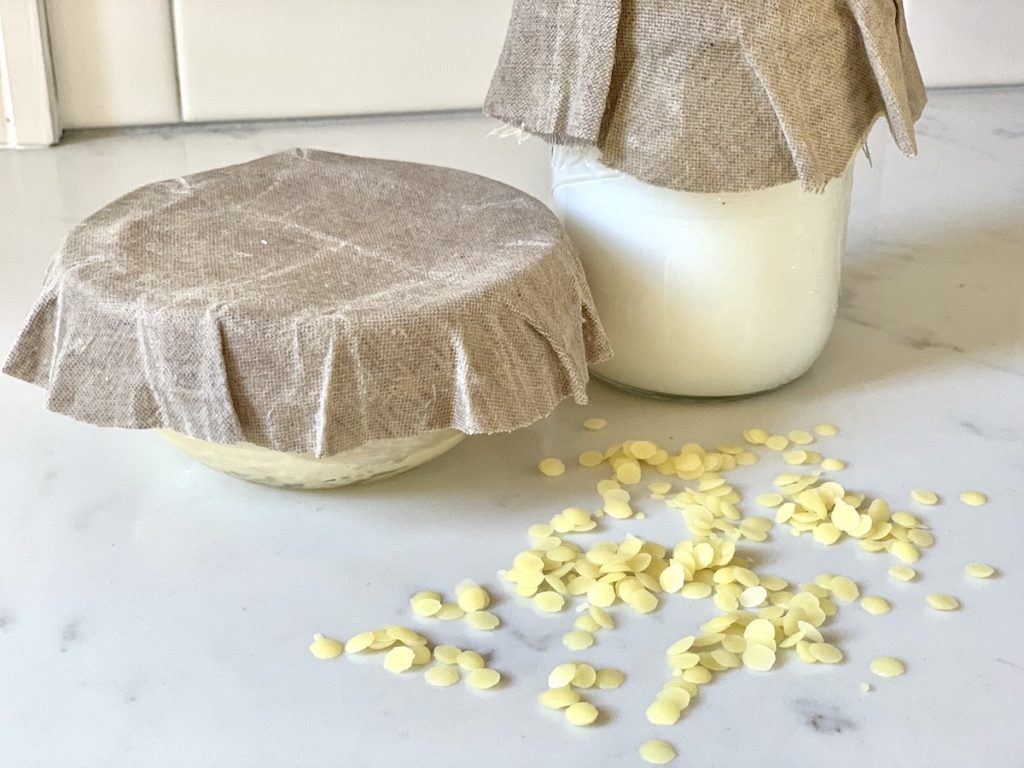
3 Main methods of making beeswax wraps
Using the oven
This is the method I used for my original post. I find this the best choice if you have a lot of beeswax wraps to make. It might also be one of the less messy ways to do it.
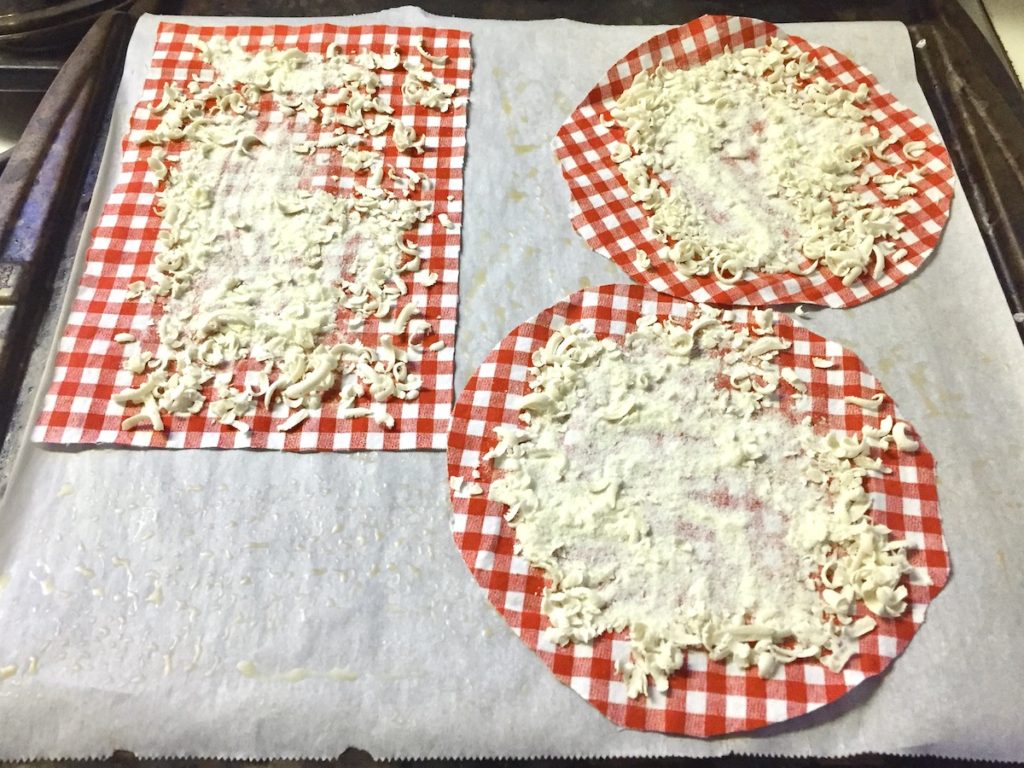
With a hot iron
I like using a hot iron if I am just making a few beeswax wraps. You don’t need to wait for the oven to have the right temperature. Also, this is a pretty quick way to make them.
Melting bees wax in a double-boiler
For full disclosure, I need to mention that I have not yet tried melting the beeswax and then using a brush to get it on the fabric. What I have heard, though, is that it can be messy. Maybe one of these days I’ll give it a try.
What you need
Linen: This time around, I chose linen for my fabric (read more here about why I love it so much). It is a bit heftier than regular cotton fabric and naturally stain, odor, and bacteria resistant. You’ll want to wash it before you use it. I often use linen from an affordable Ikea tablecloth (unfortunately, it is no longer available but this tablecloth is similar). Or use any linen or cotton fabric you like.
Just like beeswax linen is naturally anti-bacterial, so this is a double-whammy in my book!
Beeswax: Obviously, you need beeswax. Many people make their wraps only with beeswax. I, on the other hand, like to include 2 other ingredients:
Pine resin: Pine resin is what gives these wraps their stickiness – or clinginess. If that is what you’re looking for, I recommend including pine resin.
Jojoba oil: Adding a bit of jojoba oil to this mixture makes the wraps more pliable. I have used it in my original beeswax wraps and still use it when I make more.
Since I’ll be using the hot iron method, you’ll need that, too.
Parchment paper to have a work surface that is non-stick and easy to clean up. And possibly a pastry brush. I have not had much trouble cleaning it but I like to have one that I am only using with beeswax.
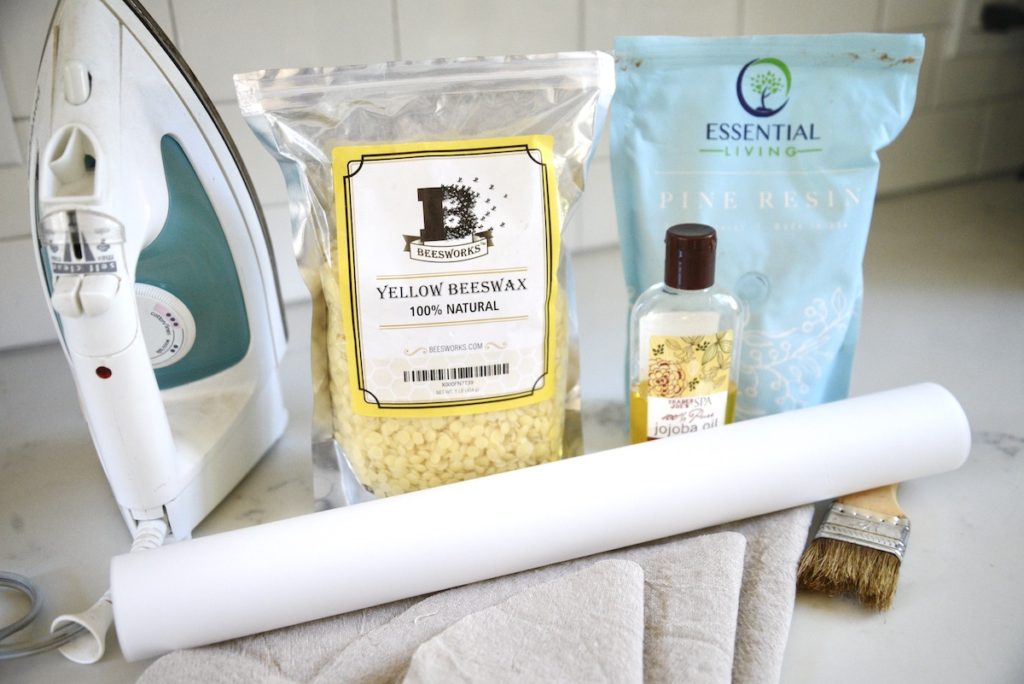
How to make beeswax wraps
Cut out the linen in the shapes and sizes you need.
Round is great for covering bowls and jars while square is better suited for wrapping things like cheese or sandwiches. I like to place my jar or bowl upside down on my linen, add a good bit for the hangover, and cut that out. If you wanted, you could serge your edges. I have never done it and my beeswax wraps still look fine.
Find a suitable area to make these. An ironing board works great or some work table. I did it on our quartz kitchen counters but that may not be the most ideal surface.
Place the parchment paper on your work surface and turn on the hot iron. I used the cotton setting (the hottest) but you could try using a lower temperature if you’re not sure.
Put the cutout linen on top of the parchment and sprinkle with beeswax. The ratio here is 2:2:1 for the beeswax:resin:jojoba oil.
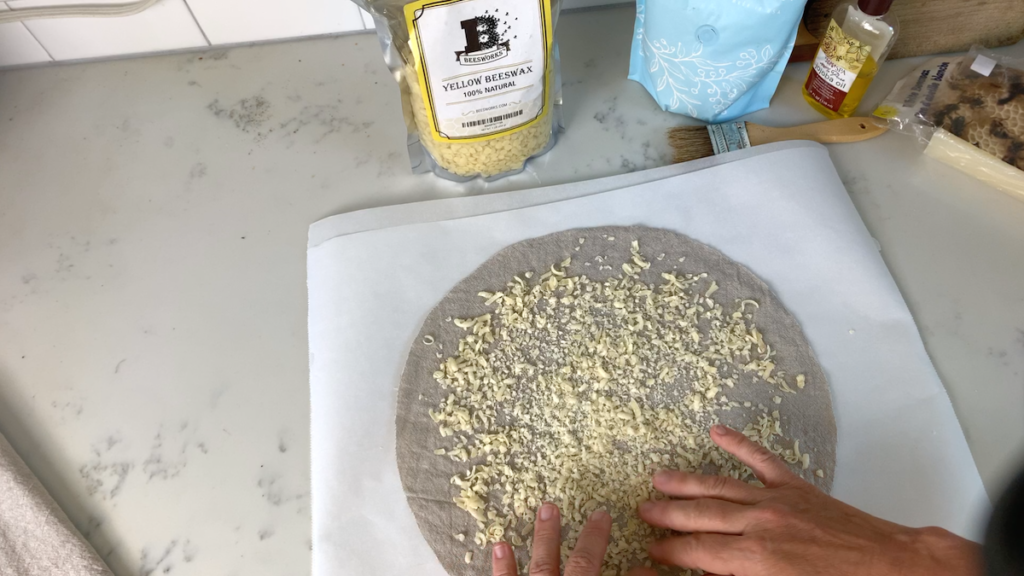
I just eyeball things but add about a similar amount of resin and then squirt some jojoba oil on it.
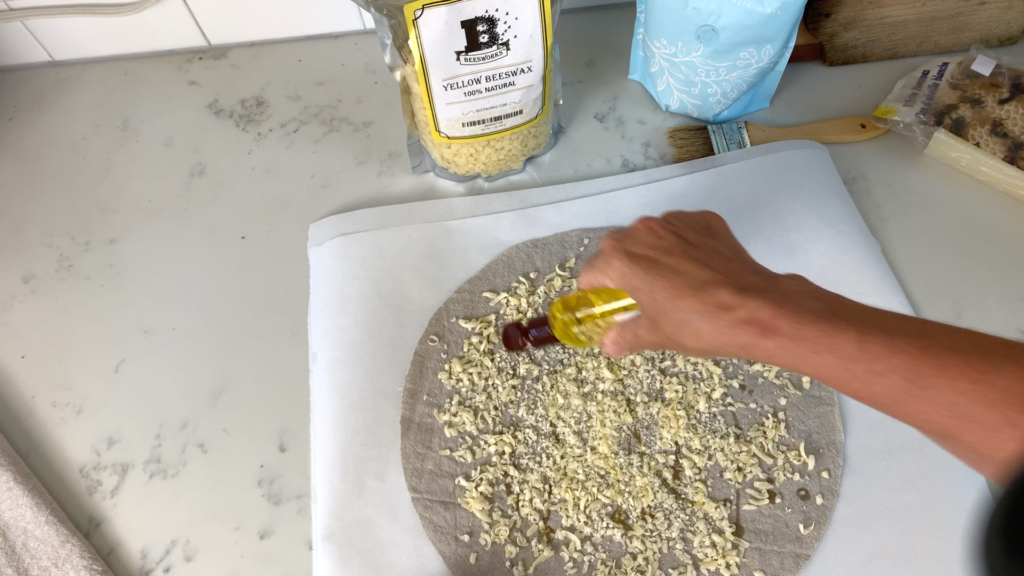
Now put a second layer of parchment paper on top and start ironing. The idea is to melt everything and gently distribute the wax mixture with the pressure of the hot iron. Don’t worry about letting it go beyond the edges of the fabric. But do avoid letting it get on your hot iron – it’s a sticky mess.
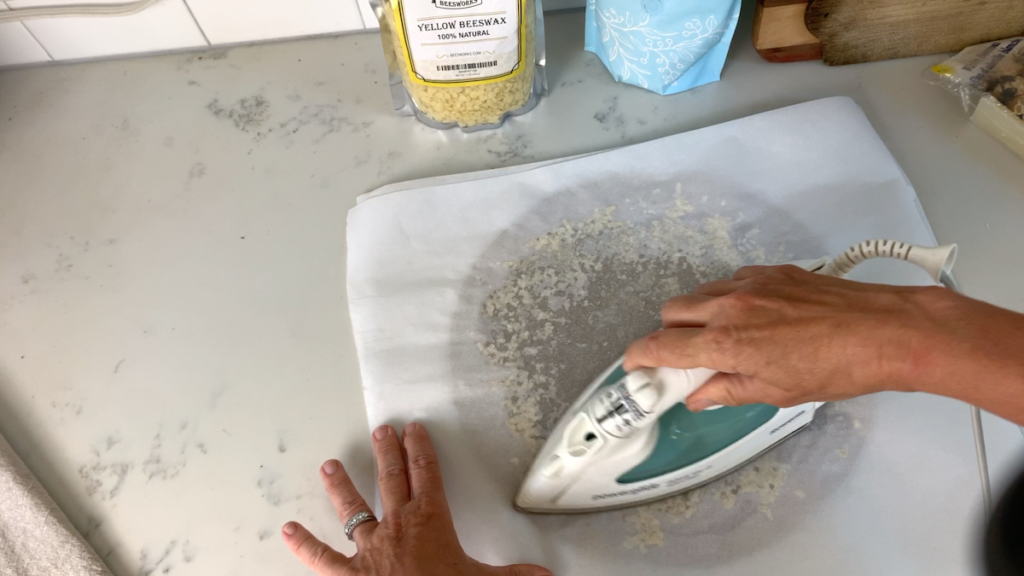
Working fast, peel the top parchment off, then the beeswax wrap, and wave it in the air to cool it down.
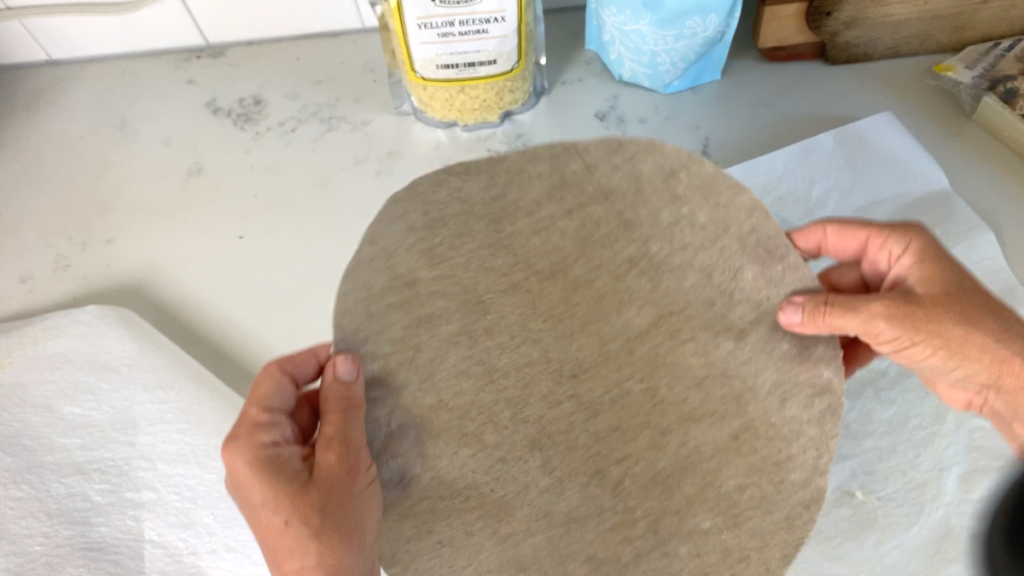
And that, my friends, is all!
If you have more wraps to make you simply repeat. If you found some of the waxy mixture on the parchment, you can peel that off and place it on your next piece.
How to use beeswax wraps
Once you have a few of those wraps, you’ll find more and more uses. I like to use them to cover my kefir jar (it allows some airflow). Beeswax wraps are perfect for wrapping cheeses or veggies.
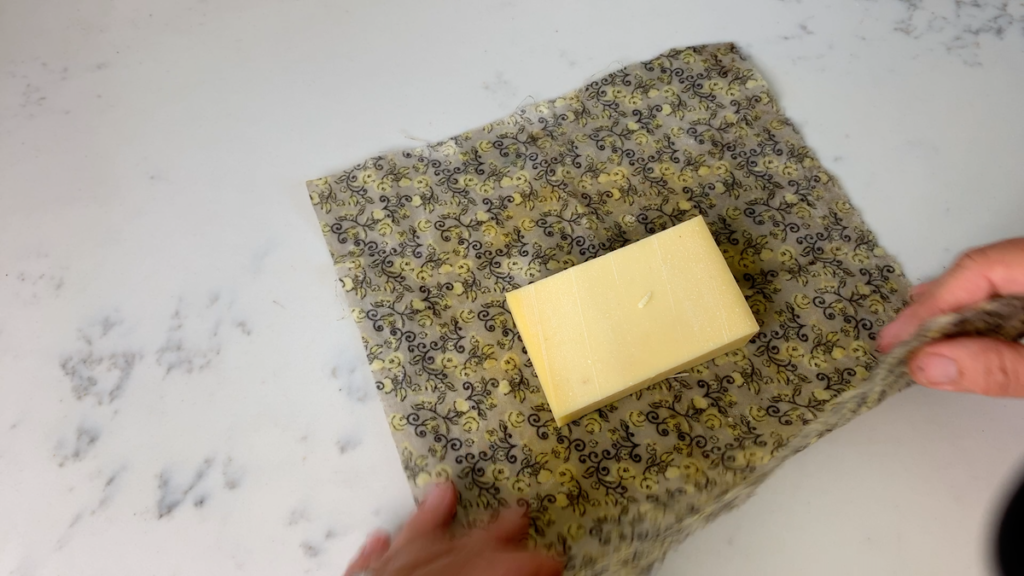
Since onions have a strong smell, I have a dedicated wrap that I only use for onions.
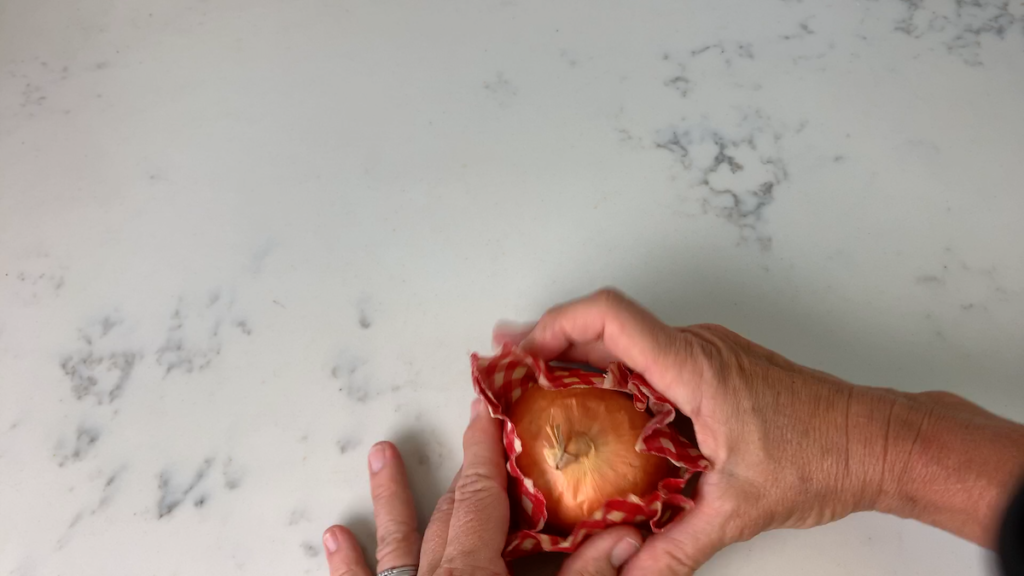
You can wrap sandwiches or bread in your beeswax wrap.
It is also the perfect cover for a bowl in which you’re letting dough rise (whether that is yeast or sourdough). I have a favorite enamel bowl for bread making and made a wrap large enough for this bowl.
Especially when you’re using these wraps as a cover for bowls or jars, you’ll be using the warmth of your own hands to soften the beeswax and gently press it onto the sides. With the added resin, it will stay there!
How long do they last
I still have the beeswax wraps I made over 2 years ago and I use them all the time! Some have visible creases in them but they are still going strong.
If the beeswax is wearing off, I would simply add some more, and use the hot iron method.
Since you are only using natural ingredients you could put old ones in the compost but I personally would rather see if I can bring them back to life.
Shop this post:
Linen fabric (or this one from Target)
Are you using beeswax wraps? What are your favorite uses?
Pin For Later:
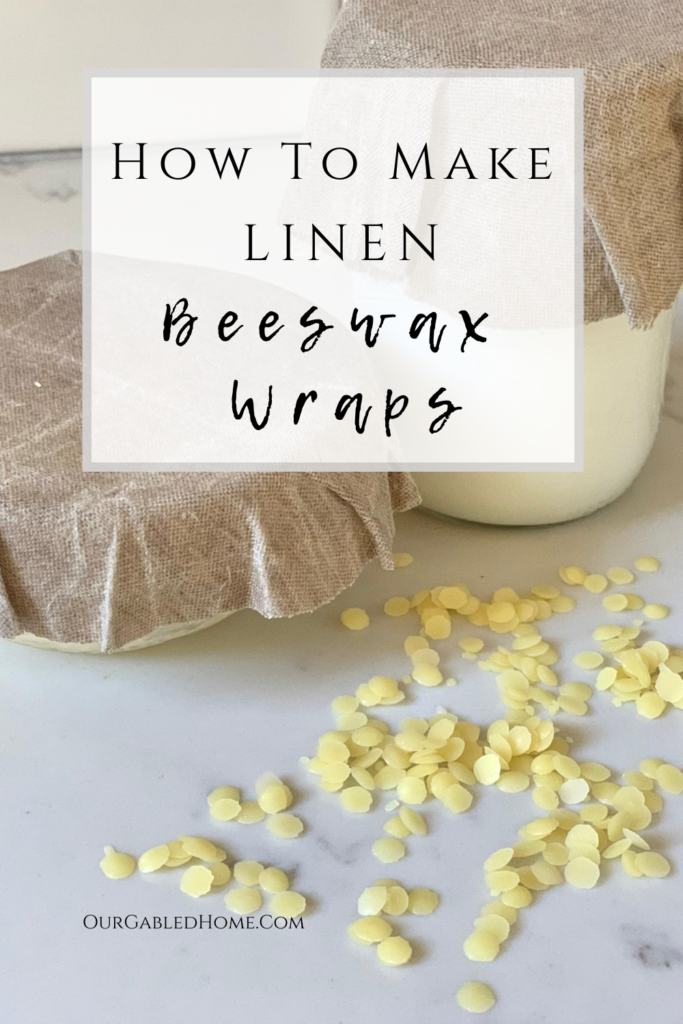
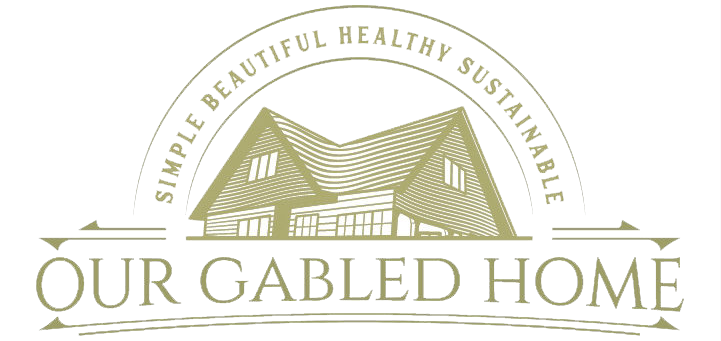

This is a great tutorial! I had purchased all the items needed but was putting it off because all the other tutorials I found had you melt everything then paint it on. This seems much easier and less messy and time consuming! I’m goi g to try it this way! Thanks.
I am so glad to hear you find this tutorial helpful! Happy making ~ Anja
Do you sell them? They look easy, but life is busy right now too and I’d be interested in buying some if you sell any.
Unfortunately, I doesn’t make sense for me to sell them. You can purchase regular beeswax wraps here: https://amzn.to/40KCETa and here: https://tidd.ly/47pyl1O (affiliate links) ~ Anja
This is so cool. I honestly didn’t even know this was possible. I’m definitely sure I’d like to give this a try and use them in my own kitchen. Thank you so much!
-Rae
http://www.raeelizabethdesign.com
I am so glad! Happy making ~ Anja
Great tutorial! Thank you so much. I just found your blog and I like it a lot! I’ll be sticking around more to learn from you. Thank you!
Yay! I am so glad you’re enjoying my blog ~ Anja
I am definitely interested in making beeswax wraps, but I’m really allergic to pine. I’m sure I can’t use pine resin. Is there an alternative to the pine resin? If not, and the proportions are 2:2:1, would I just use 2:1 beeswax to jojoba oil?
You can leave out the pine resin and start playing with 4 parts beeswax to 1 part jojoba oil ~ Anja
Is it really less expensive to make-the ingredients are pretty pricey.
It depends on where you source your ingredients but it’s still less expensive than buying beeswax wraps ~ Anja
This is good to know.
Yes! Plus they make great gifts ~ Anja
Nice! Happy making ~ Anja
How do you clean them to reuse?
Just use some lukewarm water and then air dry them ~ Anja
Another question…how do you store them until you use them??
I just fold them and keep them loosely stacked in a drawer ~ Anja
Great tutorial! Thank you for sharing 🙂 How do you normally store your beeswax wraps when not in use?
I simply keep my many beeswax wraps stacked in a drawer. Thank you so much for your nice comment ~ Anja
Could you use fractionated coconut oil (or regular coconut oil) instead of jojoba oil?
Even though I have not tried that, I can imagine fractioned coconut oil would work. If you try it, let me know how it turned out ~ Anja
I’ve heard of and seen beeswax linen wraps in stores before, but never really thought twice about them. Now that you’ve shown us how easy they are to make, I might just make my own to wrap my cheeses in!
Thanks for sharing it with us on the Embracing Home and Family Link-up party!
-Cherelle
Thank you and yes, they are so easy to make 💛 🐝!
I never realized how simple these would be to make, thank you for sharing! Such a great eco-friendly way to preserve food.
This is definitely something I’ve wanted to try for a while! I just need to do it lol. The boight ones are so expensive it would be much cheaper to make my own. Especially since I already have beeswax!
Wow, this looks way easier to make than I thought it would be! Thank you for the easy instructions!
I need to make these for my daughter! She has been wanting some. Great tutorial! Come by and link up to my centerpiece Wednesday linky party and share this post!
Karin
Thank you, Karin. And thank you for inviting me to your link party – I’ll definitely check it out!